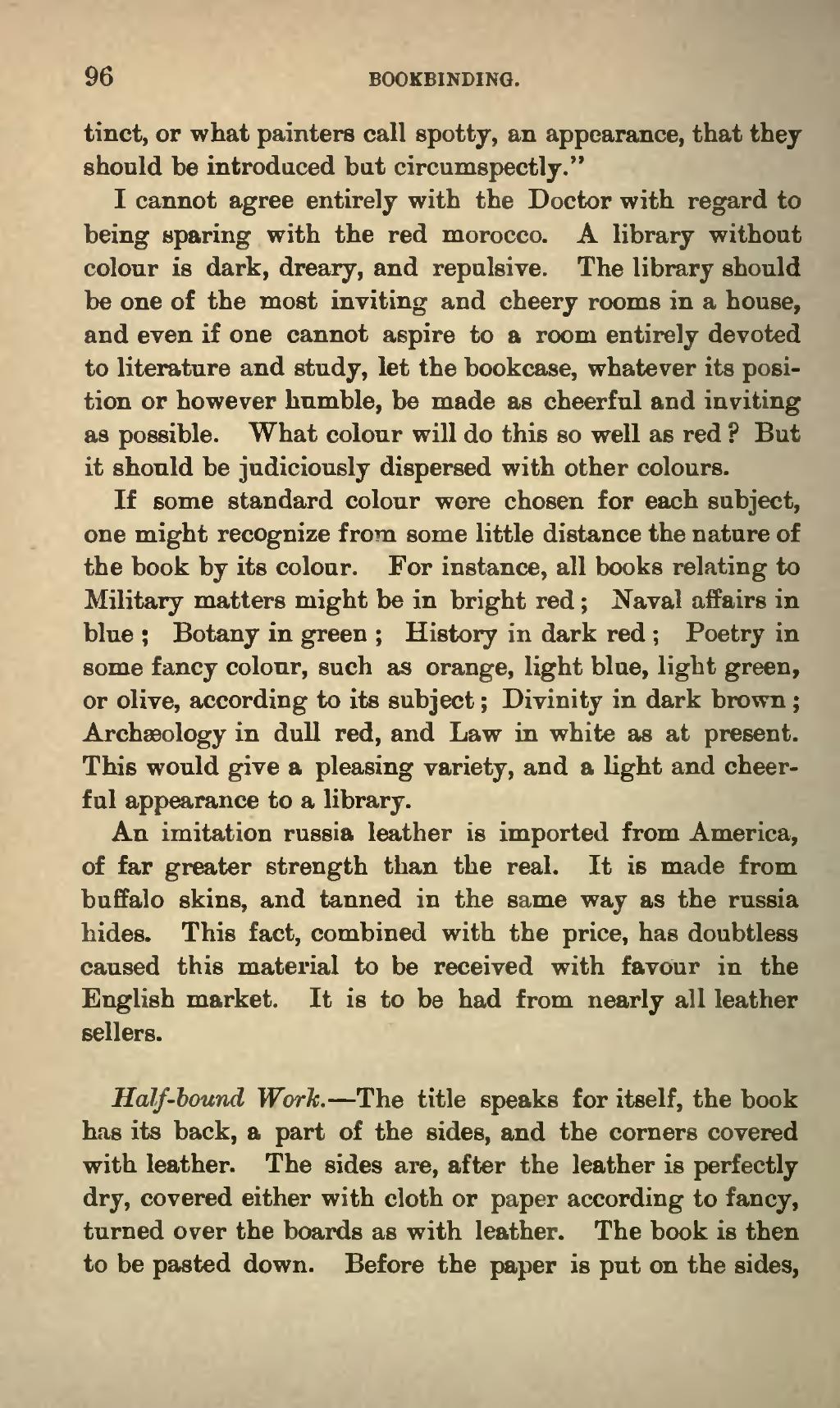tinct, or what painters call spotty, an appearance, that they should be introduced but circumspectly."
I cannot agree entirely with the Doctor with regard to being sparing with the red morocco. A library without colour is dark, dreary, and repulsive. The library should be one of the most inviting and cheery rooms in a house, and even if one cannot aspire to a room entirely devoted to literature and study, let the bookcase, whatever its position or however humble, be made as cheerful and inviting as possible. What colour will do this so well as red? But it should be judiciously dispersed with other colours.
If some standard colour were chosen for each subject, one might recognize from some little distance the nature of the book by its colour. For instance, all books relating to Military matters might be in bright red; Naval affairs in blue; Botany in green; History in dark red; Poetry in some fancy colour, such as orange, light blue, light green, or olive, according to its subject; Divinity in dark brown; Archæology in dull red, and Law in white as at present. This would give a pleasing variety, and a light and cheerful appearance to a library.
An imitation russia leather is imported from America, of far greater strength than the real. It is made from buffalo skins, and tanned in the same way as the russia hides. This fact, combined with the price, has doubtless caused this material to be received with favour in the English market. It is to be had from nearly all leather sellers.
Half-bound Work.—The title speaks for itself, the book has its back, a part of the sides, and the corners covered with leather. The sides are, after the leather is perfectly dry, covered either with cloth or paper according to fancy, turned over the boards as with leather. The book is then to be pasted down. Before the paper is put on the sides,
